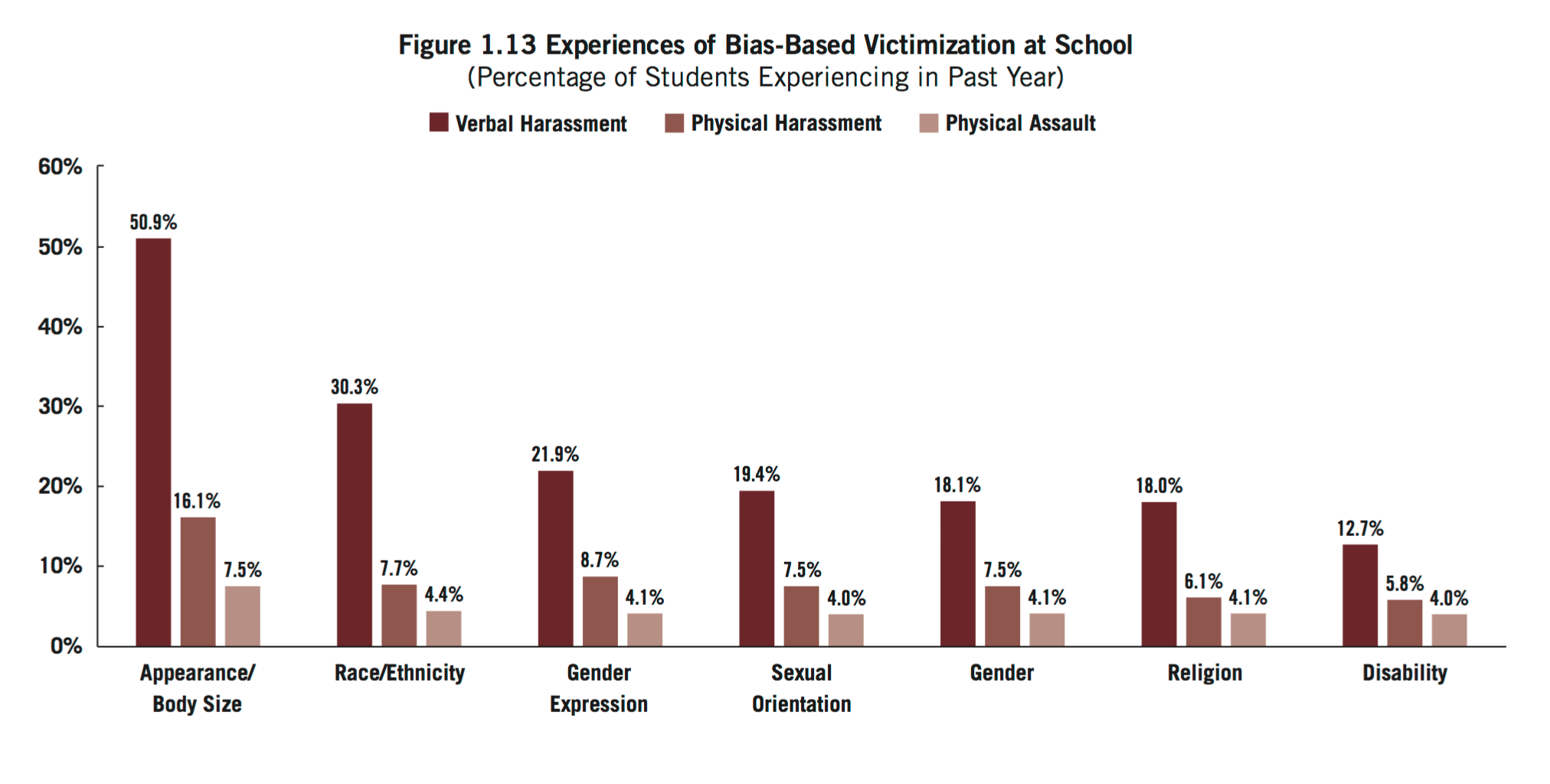Some Good News and Not-So-Good News About the Last Decade of Bias-Based Bul

This month was the 10th annual National Bullying Prevention Month, which provides an opportunity for the school community to come together to raise awareness of bullying and harassment.
The bad news? According to our new report, From Teasing to Torment: School Climate Revisited, A Survey of U.S. Secondary School Students and Teachers, an astounding 92 percent of students reported that their peers are bullied, called names or harassed at school based on their personal characteristics. Most commonly, students noted that other students are often harassed due to their appearance, sexual orientation, race/ethnicity, academic ability and how they express their gender – a trend that has persisted over the last decade. And although students’ reports of some types of bullying have decreased, in 2015 students were more likely to report that their peers are bullied due to their race/ethnicity, academic ability and religion than they were in 2005.
How will you make your school safer for all students? #MondayMotivation https://t.co/vCOJ2fFSlZ pic.twitter.com/Zo5R7V3AEE
— GLSEN (@GLSEN) October 3, 2016
Students’ own reports of their experiences of bullying in school are also concerning. Almost three-quarters (74 percent) of middle and high school students reported being bullied or harassed themselves during the past school year. For example, 51 percent of students reported being verbally harassed due to their appearance and 29 percent reported being sexually harassed.

Unfortunately, we continue to see disparities in bullying and harassment and in the educational outcomes they are likely to affect. LGBTQ students experienced more victimization based on sexual orientation, gender expression, gender, appearance and disability, and gender nonconforming students experienced greater frequency of all types of victimization. Not surprisingly, female students faced higher rates of sexual harassment, and students of color faced higher rates of victimization based on their race or ethnicity. These higher levels of bullying were related to poorer educational outcomes, including lower educational aspirations, more school discipline and greater absenteeism.
The good news? The portion of students reporting that their peers are bullied due to their appearance or actual or perceived sexual orientation has decreased over the last ten years (although these types of bullying are still extremely prevalent). It’s also good news that both GSAs and inclusive policies have been on the rise over the last ten years, and most teachers already receive training on bullying (although less than half of students attend schools with GSAs or inclusive policies, and most educators do not receive effective training that incorporates LGBTQ issues).
Luckily, there are effective strategies to reduce bias-based bullying and harassment in schools:
- Enacting and implementing inclusive anti-bullying policies that clearly include race/ethnicity, sexual orientation and gender identity/expression, among others, as protected categories (check out GLSEN’s model policies);
- Providing educators with effective professional development that incorporates meaningful content on bias-based bullying and the tools to teach in LGBT-inclusive ways;
- Supporting the development of student clubs, such as GSAs, which often help to mobilize students against multiple types of bias and make LGBTQ students feel safer and more welcome at school;
- Regularly assessing school climate and the pervasiveness of bullying and bias, such as through GLSEN’s Local School Climate Survey, an online tool to develop and administer customized surveys to your local school community.
Due in part to campaigns like National Bullying Prevention Month, what was once seen as a rite of passage for students is now understood as a widespread problem with lasting consequences. However, it is time we turn this understanding into action and offer the school community the supports essential to creating safe and affirming educational experiences. And by doing so, we’ll ensure that all students have access to an education that allows them to learn in the most supportive environment possible – and that is the best news of all.
Christian Villenas, PhD, is the Senior Research Associate at GLSEN.
